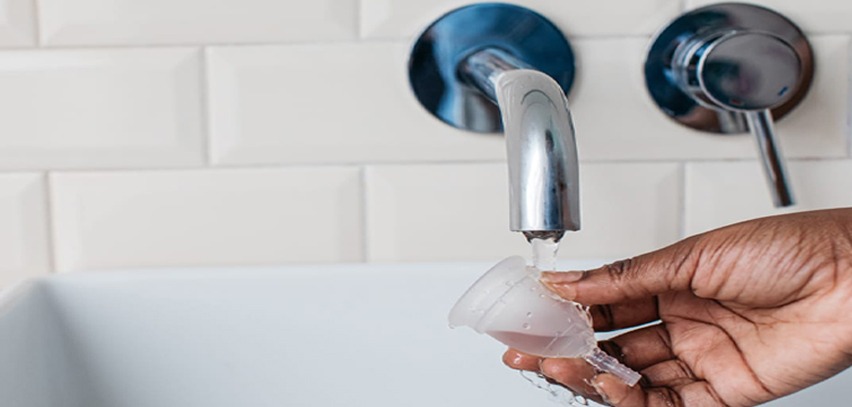Menstrual Cups: A Sustainable Alternative to Traditional Period Products
Mensuration is a natural aspect of a woman’s life, but for many, it turns out to be uncomfortable and inconvenient. Traditional period products like tampons and pads can be expensive, uncomfortable, and produce a significant amount of waste. However, there is an alternative that is gaining popularity: menstrual cups. In this blog, we explore more about menstrual cups, it is working, and how they are sustainably better alternatives to conventional period products.
What are Menstrual Cups?
A menstrual cup is a small, bell-shaped cup molded from medical-grade silicon, rubber, or latex.
The menstrual cup is crafted to be placed inside the vagina to gather menstrual blood. It is sustainable as well as reusable providing better sanitary care than tampons and pads.
How do Menstrual Cups Work?
The process of using a menstrual cup involves folding and inserting it into the vaginal canal. Once inserted, it is positioned beneath the cervix to collect menstrual blood. The cup significantly provides better sanitation and protection from leakage as it can hold up to an ounce of fluid after 8-12 hours, the cup can be removed, emptied, and washed before reinsertion.
Why are Menstrual Cups Sustainable?
Menstrual cups are a sustainable alternative to conventional period products for varied reasons:
Reusable: Menstrual cups as described earlier can be reused for several years thus reducing the amount of waste produced by conventional period products.
Environmentally friendly: The production and disposal of traditional period products have a significant environmental impact. Menstrual cups are created from medical-grade silicone, rubber, or latex, which are biodegradable thus ethically making it an environment-safe product.
Cost-effective: Though the initial cost seems to be high, it compensates as it can be used for several years.
Healthier: Conventional period products may contain chemicals and fragrances that can cause irritation accompanied by allergic reactions. Menstrual cups are made of medical-grade materials that are safe and gentle on the body.
Convenient: Menstrual cups provide up to 12 hours of protection from leakage thus making them more convenient than tampons and pads which require frequent changes.
Cleaning Your Menstrual Cup: A Guide to Proper Care and Maintenance
Menstrual cups offer a great substitute for customary menstrual products like pads and tampons. They are eco-friendly, economical and with appropriate maintenance and care can last for many years. However, it is crucial to ensure proper cleaning to avoid any potential health risks and maximize its durability. In this blog, we will explore how to clean menstrual cups properly to maintain their quality and hygiene.
Here is a guide outlining the necessary steps for cleaning your menstrual cup:
Step 1: Wash Your Hands
Prior to inserting or removing your menstrual cup, ensure to wash your hands properly with soap and water. This is essential in preventing any bacteria from entering your vaginal area.
Step 2: Empty the Cup
Remove your menstrual cup and empty the contents into the toilet. When removing your menstrual cup, ensure to empty the contents into the toilet. In cases where you cannot access soap and water, wiping the cup with toilet paper is acceptable. However, you are recommended to clean it with soap and water as soon as possible.
Step 3: Rinse with Water
Rinse your menstrual cup with cold or warm water to remove any remaining blood or discharge. Never use hot water, as it can damage the cup’s silicone material.
Step 4: Clean with Soap
After rinsing, wash your menstrual cup with mild soap and warm water. Be sure to use a fragrance-free, pH-balanced soap that will not irritate your skin or harm the cup’s material. You can also use a menstrual cup cleanser or sterilizing solution to ensure thorough cleaning.
Step 5: Sterilize Your Cup
In circumstances where you must use a public restroom wiping it off with toilet paper is a proposed alternative. However, it is advised to clean the cup using soap and water at the earliest chance available.
Step 6: Store Properly
After the cleaning and sterilization process, it is recommended to store the menstrual cup in a dry and tidy space, for instance, a fabric pouch or a container. However, it is advisable to steer clear of storing it in a sealed or plastic bag which could lead to the growth of bacteria and mould.
Guides for Maintenance of menstrual cups:
You should keep up with the manufacturer’s instructions on cleaning and care as maintaining it properly is vital.
Avoid using harsh cleaners, brushes, or sponges, as they may cause damage to the material of the cup.
Do not use scented or fragranced products, as they can irritate the skin and damage the cup’s material.
Avoid exposing your menstrual cup to extreme temperatures, such as direct sunlight or boiling water for too long.
If there are signs of cracks, tears, or alterations in texture or color in the menstrual cap it indicates that it is time to obtain a replacement.
Conclusion
Menstrual cups are a sustainable, cost-effective, and healthier alternative to traditional period products. Menstrual cups are a great option as they provide sustainability, comfort, convenience, and affordability. They help to reduce waste and are environmentally friendly, while also providing protection and peace of mind during periods. This makes them a game-changer for those seeking an eco-friendly alternative to traditional period products. Proper cleaning and maintenance are essential for ensuring the longevity, hygiene, and effectiveness of your menstrual cup. By adhering to the aforesaid steps and procedures, it is possible to uphold the cleanliness, safety, and readiness of your menstrual cup during your periods. Proper care and maintenance can increase the lifespan of your menstrual cup, serving as a sustainable, comfortable, and economical substitute for traditional menstrual products.


